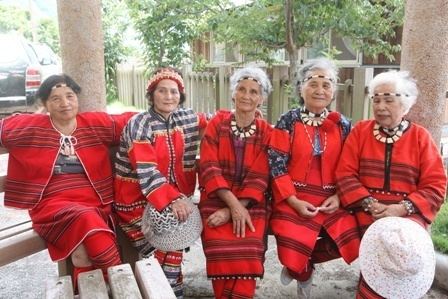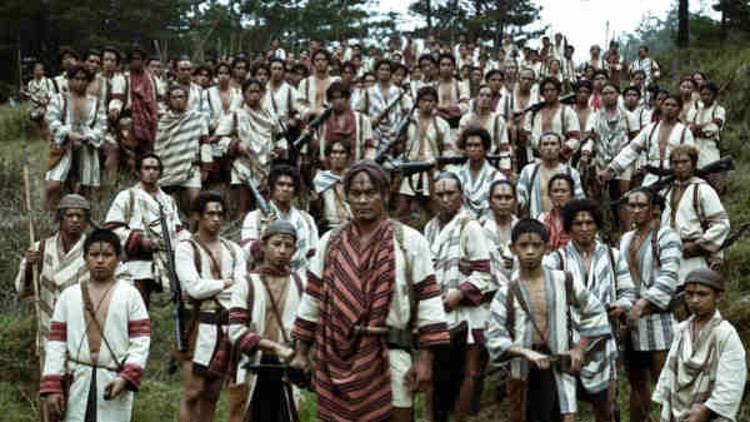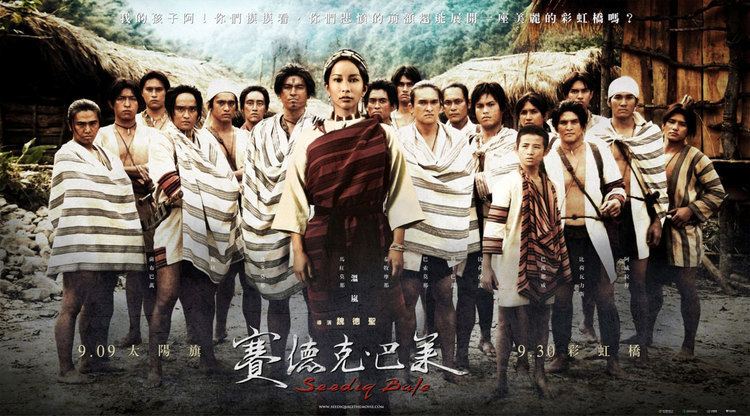 | ||
The Seediq (sometimes Sediq, or Seejiq, pronounced: [ˈsəədʑɪq] ; Chinese: 賽德克族) are a Taiwanese aboriginal people who live primarily in Nantou County and Hualien County. Their language is also known as Seediq.
Contents
- Background
- Wushe events
- Shin Cheng events
- Truku war
- Renzhiguan events 1902
- Zimeiyuan incident 1903
- In the media
- Notable people
- References

They were officially recognised as Taiwan's 14th indigenous group on 23 April 2008. Previously, the Seediq, along with the closely related Truku people, were classified as Atayal.
Background

The Seediq are recognized as Taiwan’s 14th indigenous group. They were officially recognized on 23 April 2008. Though recognized relatively late, there are records of the Seediq from the Qing dynasty. During the Japanese rule of Taiwan, anthropologists found that the Seediq and Atayal people share cultural similarities; in particular, the importance of face tattoos and the “chucao” tradition of headhunting. The more heads collected, the more prestige in the tribe.

The Seediq are also closely related to the Truku people. Both tribes have the same origin and culture, but separated early on due to migration.

During the Japanese rule of Taiwan, the anthropologist Kanori Inō (伊能 嘉矩) recognized all the indigenous tribes around Puli (埔里) as Atayal people, including the Seediq. This is because he was unable to visit all the tribes in Puli mountain area and was not able to observe the differences between the Atayal and Seediq. Even though Seediq people were not initially recognized, later anthropologists believe that the Seediq are different enough from the Atayal people to be classified as a separate indigenous group.

Seediq people were made up of three groups: the Tgdaya (德克塔雅群; 德克達雅群; 德固達雅群), Toda (都達群; 道澤群), and Truku (德路固群). The Truku in eastern Taiwan who split from the Seediq call themselves Truku people.
During the Wushe Incident Seediq Tkdaya under Mona Rudao revolted against the Japanese while the Truku and Toda did not. The rivalry between the Seediq Tkdaya against the Toda and Truku was aggravated by the Wushe Incident, since the Japanese had long played them off against each other. Tkdaya land was given to the Truku and Toda by the Japanese after the incident.
Wushe events (霧社事件)
Starting from 1897, the Japanese began a road building program that brought them into the indigenous people's territory. This was seen as invasive. Contacts and conflicts escalated and some indigenous people were killed. In 1901, in a battle with the Japanese, indigenous people defeated 670 Japanese soldiers. As a result of this, in 1902, the Japanese isolated Wushe.
Between 1914 and 1917, Japanese forces carried out an aggressive 'pacification' program killing many resisting people. At this time, the leader of 馬赫坡社, Mona Rudao, tried to resist rule by Japan, but he failed twice because his plans were divulged. At his third attempt, he organized seven out of twelve groups to fight against the Japanese forces.
Shin Cheng events (新城事件)
When Japanese soldiers raped some indigenous women, two leaders and twenty men killed thirteen Japanese soldiers.
Truku war (太魯閣之役)
The Japanese wanted to take over the Truku group. After eight years of investing the area, they attacked. Two thousand of the indigenous people resisted. The Japanese used 200 machine guns and 10,000 soldiers against the Aboriginals, but grievous wounds were inflicted upon the Japanese Governor-General Sakuma Samata during the war and caused his eventual death.
Renzhiguan events (人止關事件) 1902
After taking over the plain, Japanese gained control of Wushe. Some of the Tgdaya people who resisted the Japanese were shot. Because of this, fighting broke out again.
Zimeiyuan incident 姊妹原事件 1903
In 1903 the Japanese launched a punitive expedition to seek revenge for their earlier loss at Renzhiguan.
In the media
The Seediq people were featured prominently in the 2011 Taiwanese historical drama Seediq Bale which depicted the 1930 Wushe Incident along with the earlier 1902 人止關 and 1903 姊妹原. The Wushe Incident was depicted three times in movies including in 1957 in the film 青山碧血 Qing Shan bi xue, It was also depicted in the 2003 TV Drama Dana Sakura w:zh:風中緋櫻.
